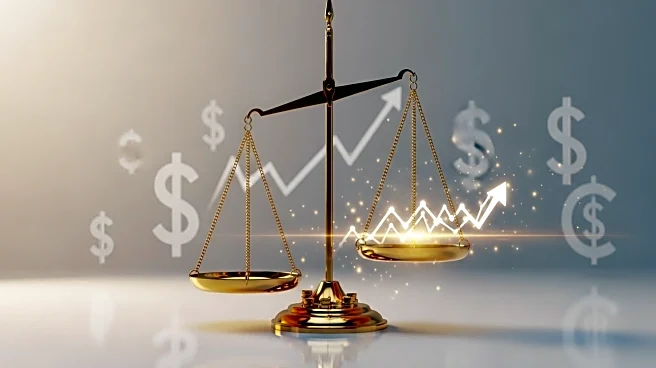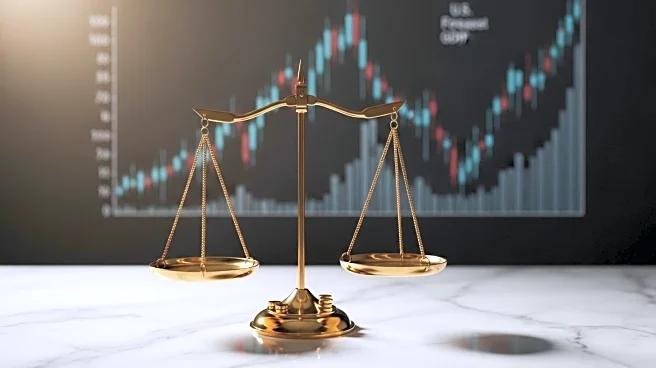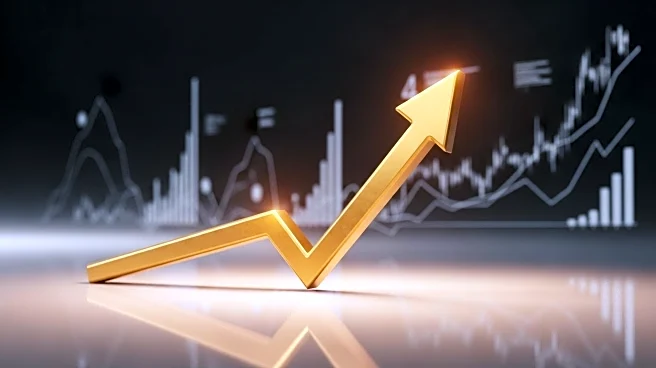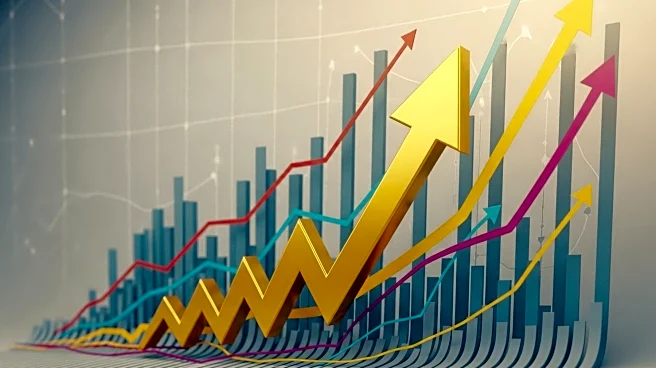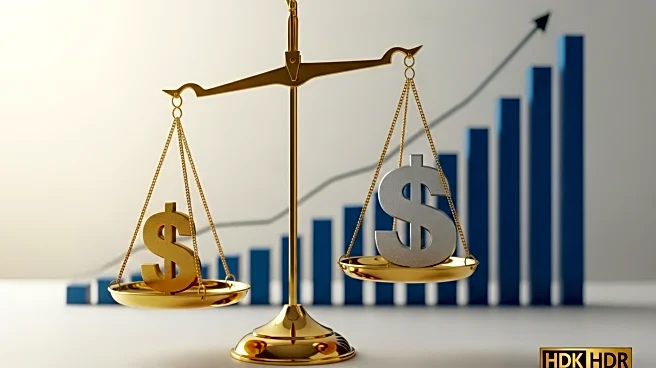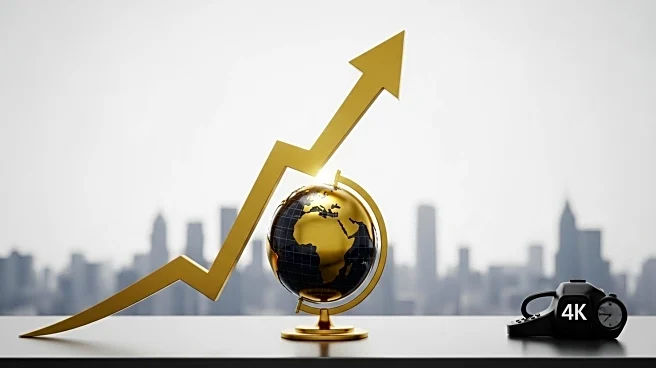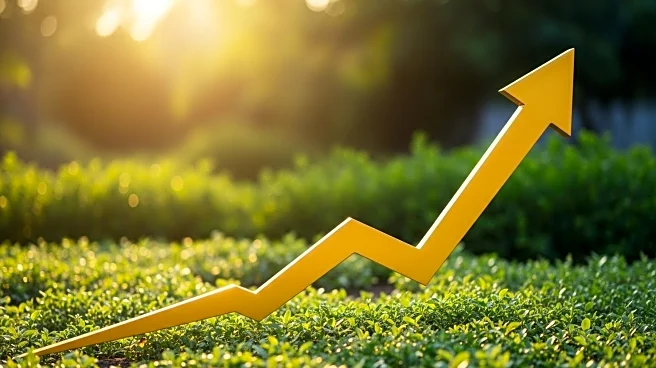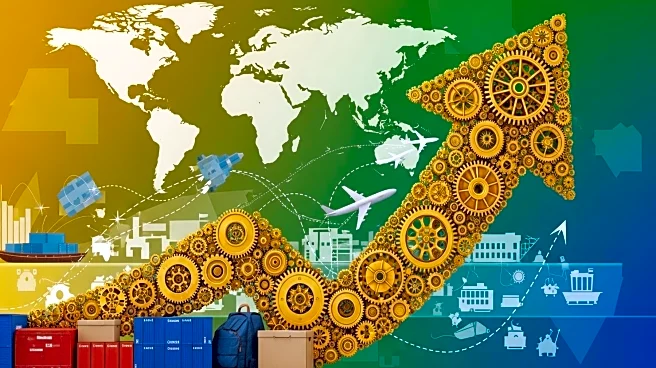What is the story about?
What's Happening?
The U.S. economy experienced a significant expansion in the second quarter of 2025, growing at an annualized rate of 3.8%, according to the final estimate from the U.S. Commerce Department. This figure surpasses the previous estimates of 3.3% and 3%, indicating a robust economic performance despite uncertainties related to President Trump's tariff policies. The growth was primarily fueled by a boost in consumer spending, which constitutes about two-thirds of the nation's economic activity. However, the data also reflects a complex economic landscape, as the GDP formula subtracts imports to exclude foreign production, and a decrease in imports contributed to the GDP increase. The first quarter of 2025 saw a contraction of -0.5%, highlighting an overall economic slowdown in the first half of the year.
Why It's Important?
The revised GDP figures underscore the resilience of the U.S. economy amid trade policy uncertainties and a challenging global economic environment. The increase in consumer spending suggests strong domestic demand, which is crucial for sustaining economic growth. However, the reliance on reduced imports to boost GDP raises questions about the sustainability of this growth pattern. The data also arrives at a time of concern over the U.S. labor market, with recent reports indicating a slowdown in job creation. The Federal Reserve's recent interest rate cuts aim to stimulate hiring and economic activity, reflecting ongoing efforts to prevent a potential recession. The economic performance in the second quarter provides a mixed picture, with strong consumer activity offset by labor market weaknesses.
What's Next?
Looking ahead, the U.S. economy faces several challenges, including the need to balance trade policies and domestic economic growth. The Federal Reserve's decision to cut interest rates and its projection of further cuts suggest a proactive approach to supporting the economy. Stakeholders will be closely monitoring upcoming economic indicators, such as employment data and consumer confidence, to gauge the economy's trajectory. The potential for further trade tensions and their impact on imports and exports remains a critical factor. Policymakers and businesses alike will need to navigate these uncertainties to maintain economic stability and growth.
AI Generated Content
Do you find this article useful?
